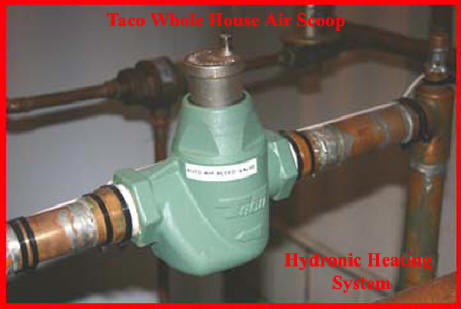Shared Knowledge
“Hydronic Heating System -
How to Get Air Out of the System”
19 February 2011
Summary: what you are going to do is circulate cold water through your system past your installed automatic air vent valves.
Background - air in the system:
Air in a hydronic heating system manifests itself in gurgling noises or the sound of water flowing when water is moving through radiators or piping.
If you are not getting heat out of radiators in one zone or floor, this is a different problem than discussed here.
When heated water starts to flow through cold pipes, it is normal for pipes to creak or make some noise as they expand slightly against installed pipe supports. This creaking is not air trapped in the system.
Background - automatic air vents:
Air is expelled out of a hydronic heating system via installed automatic air vents.
It is not the function or role of the expansion tank to trap air in the system.
As to the number of automatic air vents installed in your system, this could be anything from multiple per floor to only 1 per floor to none per floor.
In the case of my 3 story home, when I moved in, there were only 2 automatic air vents installed and both right in the furnace room.
So the first thing to check on your system is how many automatic air vents do you have?
The fewer automatic air vents installed, the harder it is to get the air out of the system.
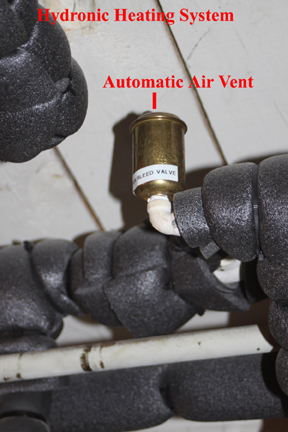
Automatic air vents have a screw-on cap on them that must be opened up enough so air can be expelled out the vents in the side of the cap. If you have not checked your automatic air vents, check them.
Automatic air vents do not last forever. Eventually they will begin to leak water out the top and thus you might find some vents with closed caps for a reason. If an automatic air vent leaks water, time to replace it. Automatic air vents simply screw into and out of the pipe they are attached to. Of course, you do not want to replace with pressure on the system or water will shoot out the hole where the automatic air vent was installed.
How to get air out of a hydronic heating system:
Turn power "off" to your system either at circuit breaker panel or via switch right on furnace.
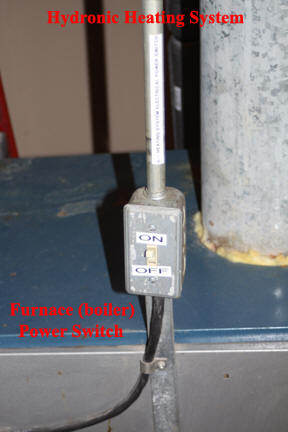
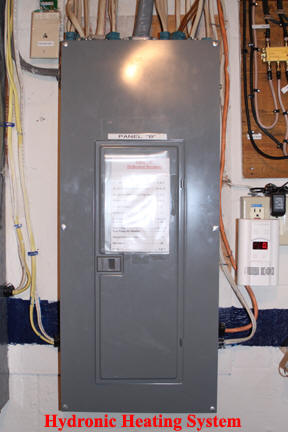
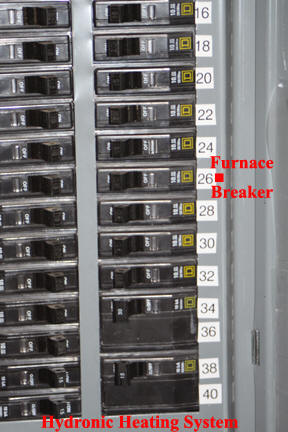
If system water is not cold, let it cool. When water is heated in a closed system, any air in the water is only compressed into the water.
Close the shut-off valve that allows water into the expansion tank. You may or may not have this valve.
Having a valve on the expansion tank makes it easier to: fill the system with water; get system pressure set correctly and drain the expansion tank.
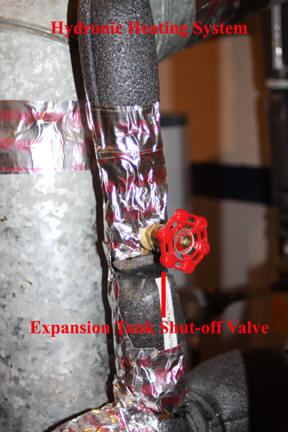
If you have electronic ignition of the pilot light, disconnect one of the wires to the pilot light igniter unit
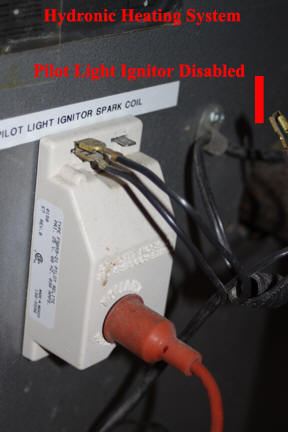
Shut off the fuel source, be it oil or natural gas.
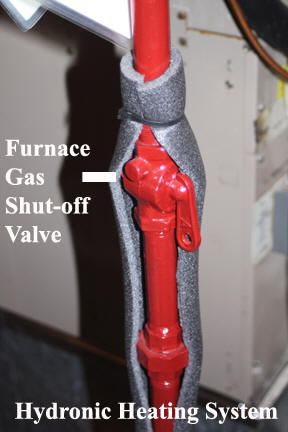
Go to all installed thermostats and set them to the maximum heat temperature meaning they are calling for or demanding heat for the area they cover.
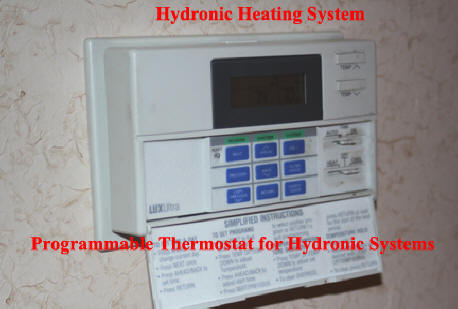
Restore power to the furnace.

After a short time, zone control valves should open and circulator pump(s) begin to run.
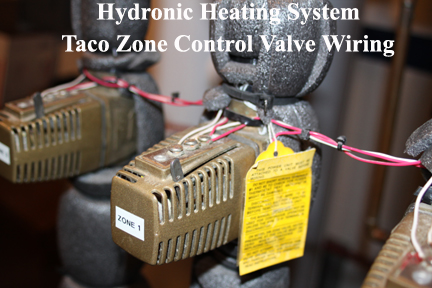
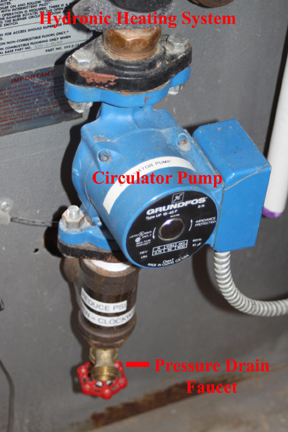
If you smell gas or oil is being supplied to furnace, shut off power to furnace immediately.
If no fuel to furnace and pump(s) running, stay with furnace for 5 minutes or so to ensure all is well.
Let circulator pump(s) run for at least an hour.
What you are doing is letting system water, cold, flow past all installed automatic air vents.
The longer you let circulator pump(s) run, the more air will be expelled out of the system.
Shut off power to furnace.

Go to all installed thermostats and set them for actual desired room temperature. Make sure at least one thermostat is set for a temperature above current temperature so at least one thermostat is calling for heat.

If you have electronic ignition, reconnect the one wire you removed to the spark igniter.

Turn back on the fuel source.

If your system has a pilot light you must light by hand, do so.
Open the valve that allows system water to the expansion tank.

Check everything over. All correct?
Power up your system.
With at least one thermostat calling for heat, after a short time, the furnace should begin to heat.
Stay with furnace and watch and listen. If you detect or think there is something wrong, shut power off to furnace immediately.
If you set on thermostat high just to get furnace to heat, go to that thermostat and set it for the actual temperature you want.
Air still in system:
Ok, you did the process defined above but you still have air in your system. What to check? What to do?
Is the cold water pressure in your system correct? When system water is cold, in a one floor house with furnace on same floor, system pressure should be at least 12 pounds per square inch (PSI). For each floor above the furnace, add 3 PSI. So in the case of my 3 story home, my system runs 12+3+3 or 18 PSI when the water is cold. And just so you know, when my system is fully heated the system pressure only rises about 3 pounds.
When a system is drained of water or the piping modified in some way, it is possible that one or more system pipes will have a complete air block not allowing any water to flow through that segment. If you think you have this problem, click here.
If system cold water pressure is correct, you do not have enough automatic air vents or they are not operating properly or they are installed in the wrong locations. And what do you do about that??? You install or have installed a whole house air scoop.
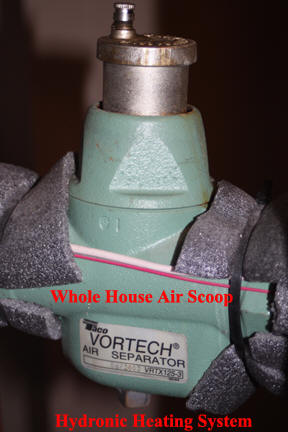
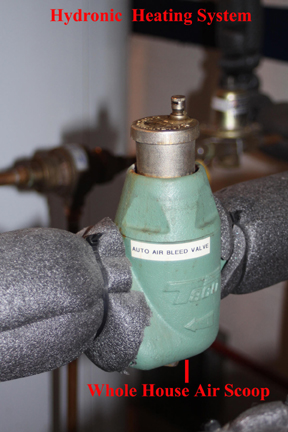
A whole house air scoop sits in hydronic heating system piping as close to the output of the furnace as possible. This device has a special "scoop" or screen that traps air as it moves past the scoop and routes the air to the built-in automatic air vent.
Whole house air scoops have been around for some time now and do not know why they are not installed on each and every home hydronic heating system as they absolutely, positively work.
Click here for more home hydronic heating system.
